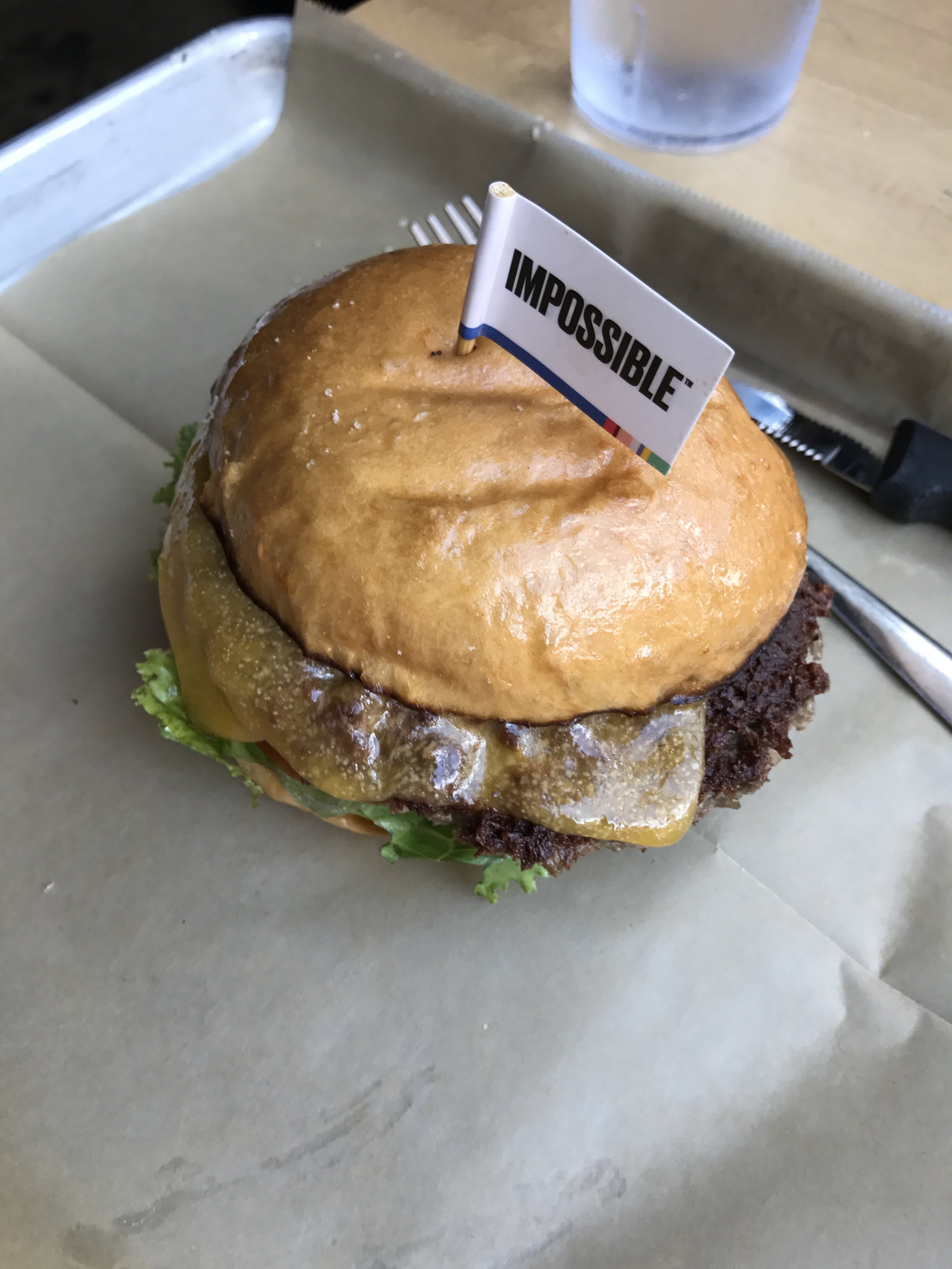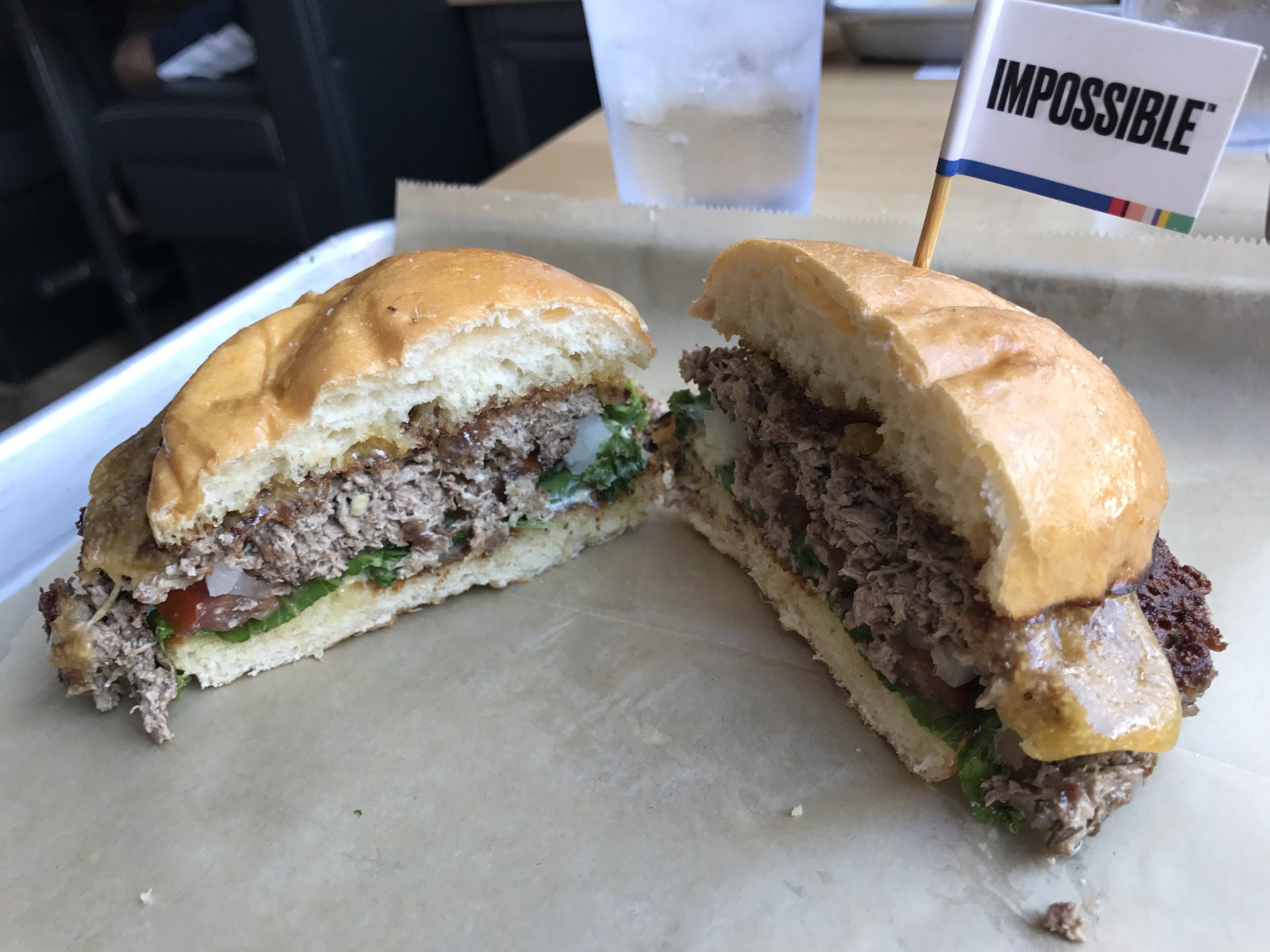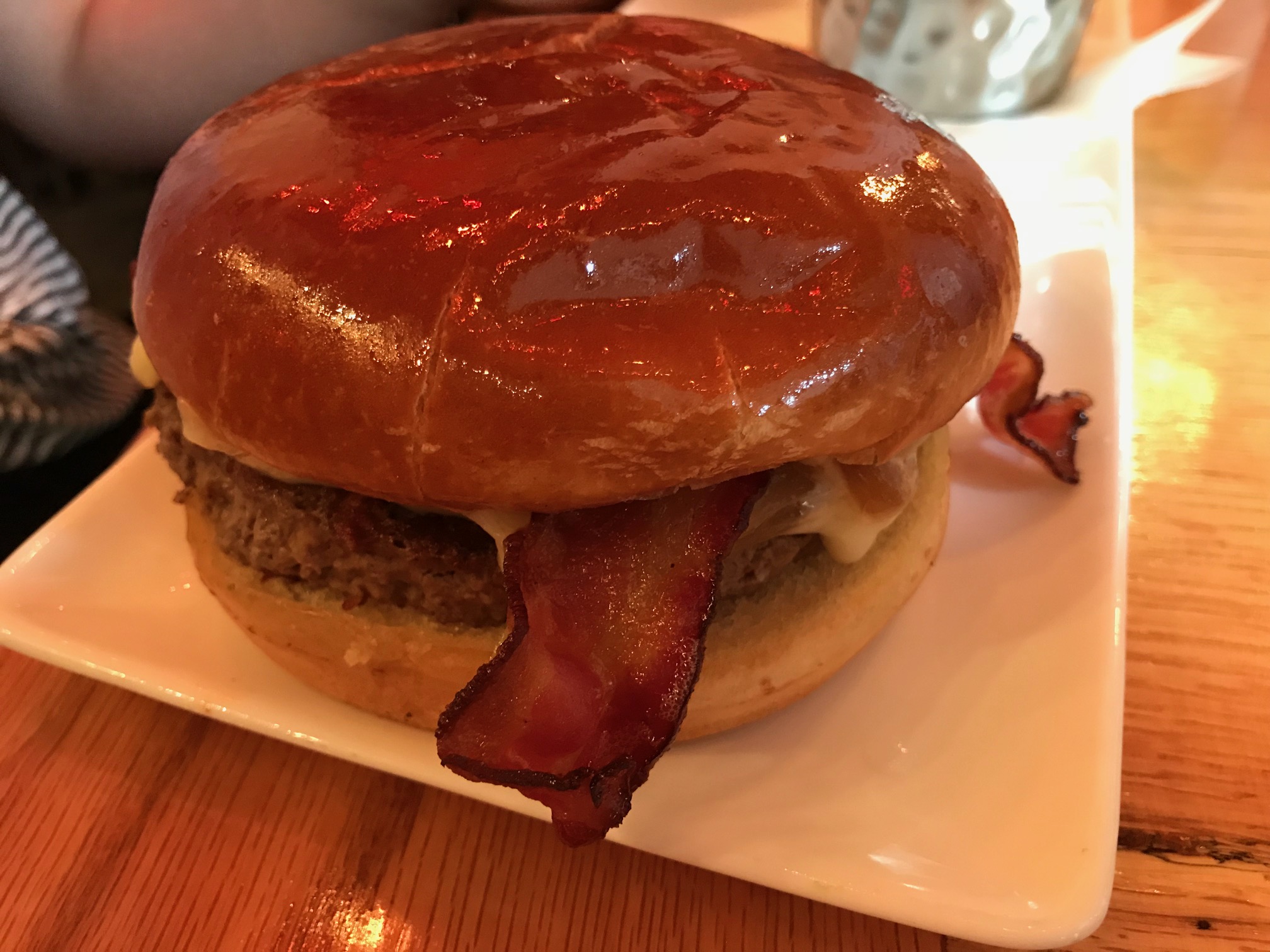A few years ago I made a choice to eat very little meat. Everyone who comes to a this dietary decision gets there for one of several reasons. For some, it's a matter of animal welfare. For me, it was the impact of excessive meat intake on my personal health: meat, particularly red meat and processed meat like bacon, has been linked to increased risk of heart disease, cancer, and other diseases. Plus, beef in particular is astonishingly carbon-intensive; were people to forgo only red meat in favor of beans (while, mind you, continuing to eat pork and poultry), the U.S. would come very near Paris Accord carbon emissions goals, all without a change in driving habits or other energy production from fossil fuels, and without a change in efficiency.
Giving up meat for me was astonishingly easy. I don't miss it. Were you to ask me to give up sweeteners, we'd have a problem. I like desserts more than I should, and despite my frequent screeds against bug juice, I have an occasional caffeine-free Diet Coke. But no meat? No problemo. Part of the reason for this is that we've had a big increase in the availability of meat substitutes in the past decade or so. This doesn't affect me so much as it affects people who eat with me. I can make meals that are almost meat that I can serve to carnivorous friends and family without feeling like I'm depriving them of anything. But hamburgers, the quintessential American food, have been a problem. I've tried multiple veggie patties and black bean patties. They're all mostly okay, but they're no substitute for real meat. You have to have in your mind that you're not eating a hamburger to enjoy them. You tell yourself, "This is a good veggie burger," but you can never convince yourself that you're eating a real-for-real hamburger.
Then I heard about Impossible Foods and their bleeding vegan hamburgers. I was intrigued, but there was no place near home for me to try one. But last summer I was in Houston a week or two before Hurricane Harvey. We found a Hopdoddy just west of Rice Stadium:
This was directly adjacent to Rice's semi-famous 1/3 mile "Bike Track," whose popularity I assume is at least partly due to the apocalyptic artillery-grade roughness of the surrounding streets. Hopdoddy was pushing the Impossible Burger hard:
But that didn't mean they didn't have the customary pile o' beef in their kitchen:
And it didn't mean that when I ordered on the waitress wouldn't say I was "brave." But when it arrived, so far, so good:
My burger looked like a million bucks. But I didn't get a chance to find out if my burger bled; it was well-done:
Impossible Burger has the look and feel of beef. It has the mouthfeel of beef. It just does. For all intents and purposes from the consumer end, this is beef. I tried a bite of my son's regular patty for a taste test. I'm a bit of an unreliable witness here; my enthusiasm for meatless foods taints my impression of these things. But honestly, the only difference was that his real burger was saltier. I suspect Impossible keeps the salt content lower to avoid dryness.
I liked the one I ate so much that I convinced my then-ten year-old daughter, a notorious carnivore, to try one. She will eat veggie patties, begrudgingly, the way somebody who's tasted whole milk will settle for almond milk on her cereal if they don't have a choice. But after tasting mine, she was enthusiastic to get her own. And she's had several since.
The primary ingredients are wheat, coconut oil, potatoes, and heme. Heme is part of the molecule that carries oxygen in your bloodstream: "hemoglobin." Impossible gets its heme in the form of soy "leghemoglobin." Their website says they chose it because of taste and lack of allergenicity. I suppose this means people won't get a rash if they eat it. Not that I knew hemoglobin allergies were a big problem.
If you're the anti-GMO type (I'm most certainly not), beware that Impossible's leghemoglobin is produced by a genetically modified yeast. But it is 100% vegan. It's not gluten-free, which is a bummer for the small fraction of the population with celiac disease. For the remaining 99% of us, it's neither here nor there. Impossible burger patties are kosher. Halal are anticipated later this year.
My second Impossible Burger was in Washington, D.C., for a work trip. My daughter's, ironically, came with bacon:
My wife's medium-rare (not ordered that way, but delivered that way) patty gave us a chance to taste the heme without the searing. It definitely loses something. The seared heme is important:
I tried to convince my daughter that the tater tots were also "Impossible," but that since they were naturally made of potatoes the impossible factor was figuring out how to make them out of animals. She didn't buy it:
Impossible Burgers are now served in more than 1,500 restaurants. Since April, White Castle has been selling Impossible Sliders for just $1.99. After trying Impossible Burgers myself, I'm convinced that meat production in the way we've been practicing it for the past 100 years has an expiration date. We simply won't tolerate the health and environmental consequences of it when we have alternatives that are this good. I'm not here to tell you that Impossible Burgers represent any kind of achievement. Quite the contrary: as good as they are, they're just the beginning. Meatless "meat" is the worst today that it ever will be. It will only get better from here. Next phase vegetarian chicken? Faux eggs? Faux seafood?














